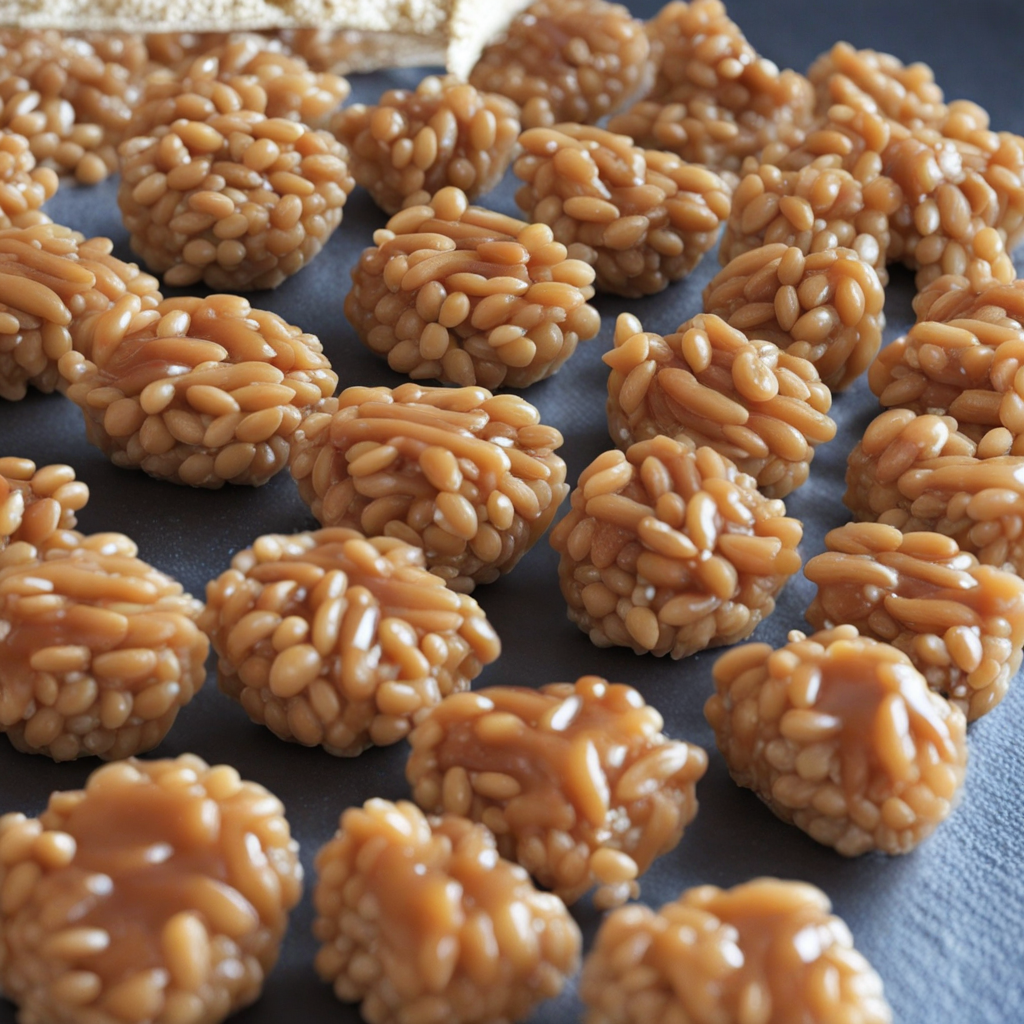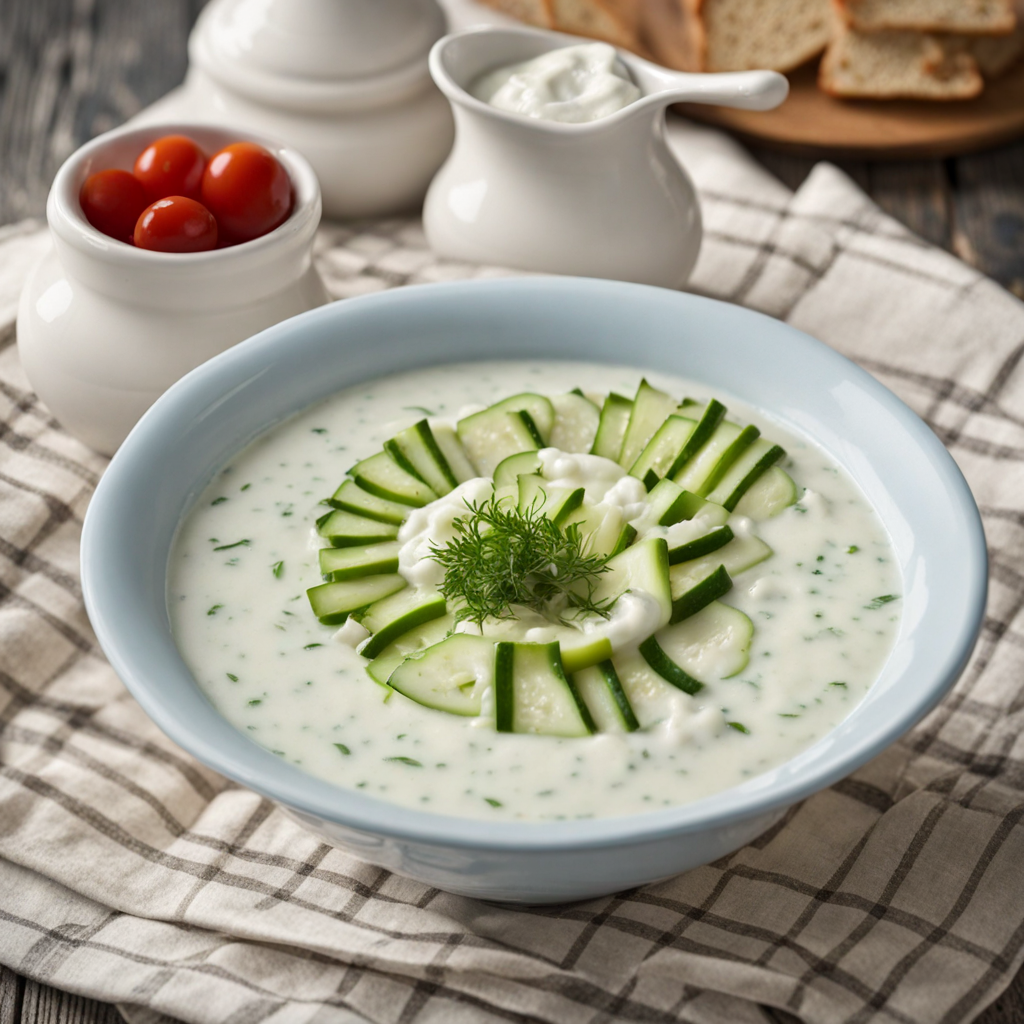Pastellaki
Pastellaki is a delightful Cypriot treat that captures the essence of the island's rich culinary heritage. These small pastry wonders are typically filled with a mixture of nuts, such as walnuts or almonds, combined with fragrant spices like cinnamon and a touch of honey. The dough is made from simple ingredients, creating a perfect balance of flaky and tender textures that provide a delightful contrast to the nutty filling. Each bite transports you to sunny Mediterranean shores, where the sweet aroma of baked goods fills the air. What sets Pastellaki apart is its unique preparation method. After being filled, the pastries are often shaped into small crescents or rolled into spirals, then baked until golden brown. The final touch usually involves a drizzle of syrup or a dusting of powdered sugar, which adds a luscious sweetness that complements the nutty interior. Enjoying a Pastellaki is not just about savoring a delicious snack; it's an experience steeped in tradition, often shared during festive occasions or family gatherings. As you take your first bite of Pastellaki, the contrasting flavors and textures will dance on your palate. The warmth from the spices mingles with the sweetness of the honey, while the crunch of the nuts adds a satisfying bite. Whether enjoyed with a cup of coffee or as a dessert after a hearty meal, Pastellaki is a celebration of Cypriot culture that invites you to explore the island's rich history through its beloved cuisine.
How It Became This Dish
The History of Παστελλάκι: A Sweet Symbol of Cypriot Heritage #### Origins Παστελλάκι, pronounced "Pastedaki," is a traditional sweet from Cyprus that embodies the island's rich culinary heritage and cultural blending through centuries of influence. This delightful dessert is composed primarily of crushed nuts, typically almonds or walnuts, mixed with sugar and flavored with cinnamon, often encased in a layer of thin pastry. The name itself, derived from the Arabic word "pasta," reflects the historical Arab influence on Cypriot cuisine, which has been shaped by various cultures over centuries, including Greek, Ottoman, and British. The roots of Παστελλάκι can be traced back to the medieval period, during the time of the Lusignan dynasty (1192-1489), when Cyprus was a significant trade hub in the eastern Mediterranean. The island's strategic location facilitated the exchange of goods and culinary practices among diverse cultures, leading to the incorporation of various ingredients and techniques that influenced local cooking. The use of nuts in desserts is a hallmark of Middle Eastern cuisine, indicating how the culinary practices of this region merged with local traditions to create unique Cypriot variations. #### Cultural Significance In Cyprus, Παστελλάκι is not just a dessert; it holds a special place in the hearts of Cypriots, often associated with celebrations, religious holidays, and family gatherings. Its preparation is traditionally a communal activity, where families come together to make large batches, especially during festive occasions like weddings, Easter, and Christmas. The sweet's significance is underscored by its association with hospitality; offering Παστελλάκι to guests is a gesture of warmth and generosity, reflecting the Cypriot spirit of welcoming others. Moreover, Παστελλάκι is steeped in symbolism. The nuts used in the dessert represent prosperity and abundance, while the sweetness signifies joy and happiness. In many Cypriot households, serving this dish during special occasions is believed to bring good fortune and blessings to the family. It is often paired with strong coffee or tea, creating a delightful contrast of flavors that enhances the overall experience. #### Development Over Time Over the centuries, Παστελλάκι has evolved, adapting to changing tastes and the availability of ingredients. During the Ottoman period, from the late 16th century until the British occupation in the late 19th century, Cypriot cuisine underwent significant transformation due to the introduction of new spices and cooking techniques. The use of phyllo pastry became more prevalent, leading to the creation of various layered desserts, including the contemporary version of Παστελλάκι that we know today. With the British colonial rule starting in 1878, Cyprus saw an influx of Western influences, and while these changes impacted many aspects of life on the island, traditional Cypriot sweets like Παστελλάκι remained cherished. The British introduced tea culture, which further popularized sweets as an accompaniment. As a result, the dessert began to be served more frequently in homes and tea houses, solidifying its place in Cypriot social life. In recent decades, as globalization has made its mark, the accessibility of ingredients has transformed the way Παστελλάκι is made. While the traditional recipe remains popular, innovative variations have emerged, incorporating local flavors and ingredients. Chefs and home cooks alike have begun experimenting with different nuts, such as pistachios or hazelnuts, as well as adding local honey or citrus zest for additional flavor profiles. These adaptations reflect the dynamic nature of Cypriot cuisine, constantly evolving while paying homage to its rich history. #### Modern Revival and Popularity The resurgence of interest in traditional foods in the 21st century has led to a renewed appreciation for Παστελλάκι. Numerous culinary festivals and events celebrating Cypriot food culture have emerged, showcasing this beloved dessert along with other traditional dishes. Artisans and bakers are increasingly focusing on preserving and promoting authentic recipes, ensuring that the cultural heritage associated with Παστελλάκι continues to thrive. Moreover, with the rise of social media and food blogging, the visibility of Παστελλάκι has expanded beyond the island. Food enthusiasts from around the world have discovered the delight of this sweet treat, contributing to its popularity among those seeking authentic culinary experiences. This newfound exposure has encouraged more travelers to explore the rich flavors of Cyprus and engage with its history, further solidifying Παστελλάκι's role as a cultural ambassador for the island. #### Conclusion In summary, Παστελλάκι is more than just a delicious dessert; it is a testament to the rich history and cultural significance of Cyprus. From its origins influenced by various civilizations to its role in family gatherings and celebrations, this sweet treat has evolved while maintaining its traditional roots. As Cyprus continues to navigate the complexities of modernity and globalization, Παστελλάκι stands as a symbol of resilience, a delicious reminder of the island's storied past, and a bridge linking generations through the shared joy of food. As we savor each bite of Παστελλάκι, we partake in a culinary journey that tells the story of Cyprus—a story of harmony, hospitality, and the enduring love for good food that transcends time and borders. Whether enjoyed at a festive gathering, a quiet evening at home, or as a special treat for guests, Παστελλάκι remains a cherished part of Cypriot identity, ensuring that its sweet legacy will endure for generations to come.
You may like
Discover local flavors from Cyprus







